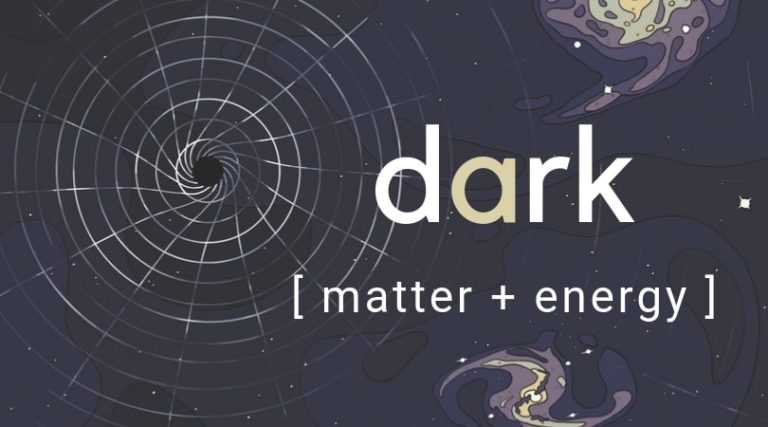What is Dark Matter and Dark Energy?
What is Dark Matter ?
Dark matter is a hypothetical form of matter thought to account for approximately 85% of the matter in the universe and about 27% of its total mass–energy density or about 2.241×10−27 kg/m3. Its presence is implied in a variety of astrophysical observations, including gravitational effects that cannot be explained by accepted theories of gravity unless more matter is present than can be seen. For this reason, most experts think that dark matter is abundant in the universe and that it has had a strong influence on its structure and evolution. Dark matter is called dark because it does not appear to interact with the electromagnetic field, which means it does not absorb, reflect or emit electromagnetic radiation, and is therefore difficult to detect.
Primary evidence for dark matter comes from calculations showing that many galaxies would fly apart, or that they would not have formed or would not move as they do, if they did not contain a large amount of unseen matter. Other lines of evidence include observations in gravitational lensing and in the cosmic microwave background, along with astronomical observations of the observable universe’s current structure, the formation and evolution of galaxies, mass location during galactic collisions, and the motion of galaxies within galaxy clusters. In the standard Lambda-CDM model of cosmology, the total mass–energy of the universe contains 5% ordinary matter and energy, 27% dark matter and 68% of a form of energy known as dark energy.Thus, dark matter constitutes 85% of total mass, while dark energy plus dark matter constitute 95% of total mass–energy content.
Because dark matter has not yet been observed directly, if it exists, it must barely interact with ordinary baryonic matter and radiation, except through gravity. Most dark matter is thought to be non-baryonic in nature; it may be composed of some as-yet undiscovered subatomic particles. The primary candidate for dark matter is some new kind of elementary particle that has not yet been discovered, in particular, weakly interacting massive particles (WIMPs).Many experiments to directly detect and study dark matter particles are being actively undertaken, but none have yet succeeded.Dark matter is classified as “cold”, “warm”, or “hot” according to its velocity (more precisely, its free streaming length). Current models favor a cold dark matter scenario, in which structures emerge by gradual accumulation of particles.
Although the existence of dark matter is generally accepted by the scientific community, some astrophysicists, intrigued by certain observations which are not well-explained by standard dark matter, argue for various modifications of the standard laws of general relativity, such as modified Newtonian dynamics, tensor–vector–scalar gravity, or entropic gravity. These models attempt to account for all observations without invoking supplemental non-baryonic matter.
What is Dark Energy ?
In physical cosmology and astronomy, dark energy is an unknown form of energy that affects the universe on the largest scales. The first observational evidence for its existence came from measurements of supernovae, which showed that the universe does not expand at a constant rate; rather, the expansion of the universe is accelerating. Understanding the evolution of the universe requires knowledge of its starting conditions and its composition. Prior to these observations, it was thought that all forms of matter and energy in the universe would only cause the expansion to slow down over time. Measurements of the cosmic microwave background suggest the universe began in a hot Big Bang, from which general relativity explains its evolution and the subsequent large-scale motion. Without introducing a new form of energy, there was no way to explain how an accelerating universe could be measured. Since the 1990s, dark energy has been the most accepted premise to account for the accelerated expansion. As of 2021, there are active areas of cosmology research aimed at understanding the fundamental nature of dark energy.
Assuming that the lambda-CDM model of cosmology is correct, the best current measurements indicate that dark energy contributes 68% of the total energy in the present-day observable universe. The mass–energy of dark matter and ordinary (baryonic) matter contributes 26% and 5%, respectively, and other components such as neutrinos and photons contribute a very small amount. The density of dark energy is very low (~ 7 × 10−30 g/cm3), much less than the density of ordinary matter or dark matter within galaxies. However, it dominates the mass–energy of the universe because it is uniform across space.
Two proposed forms of dark energy are the cosmological constant, representing a constant energy density filling space homogeneously, and scalar fields such as quintessence or moduli, dynamic quantities having energy densities that can vary in time and space. Contributions from scalar fields that are constant in space are usually also included in the cosmological constant. The cosmological constant can be formulated to be equivalent to the zero-point radiation of space i.e. the vacuum energy. Scalar fields that change in space can be difficult to distinguish from a cosmological constant because the change may be extremely slow.
Due to the toy model nature of concordance cosmology, some experts believe that a more accurate general relativistic treatment of the structures that exist on all scales in the real universe may do away with the need to invoke dark energy. Inhomogeneous cosmologies, which attempt to account for the back-reaction of structure formation on the metric, generally do not acknowledge any dark energy contribution to the energy density of the Universe.
What is dark energy? What is dark matter? Well, if we knew exactly we would have a nobel prize – we know that they exist though. So what do we know about those strange things?
Do not forget to share your opinion with us to provide you with the best posts !




0 Comments